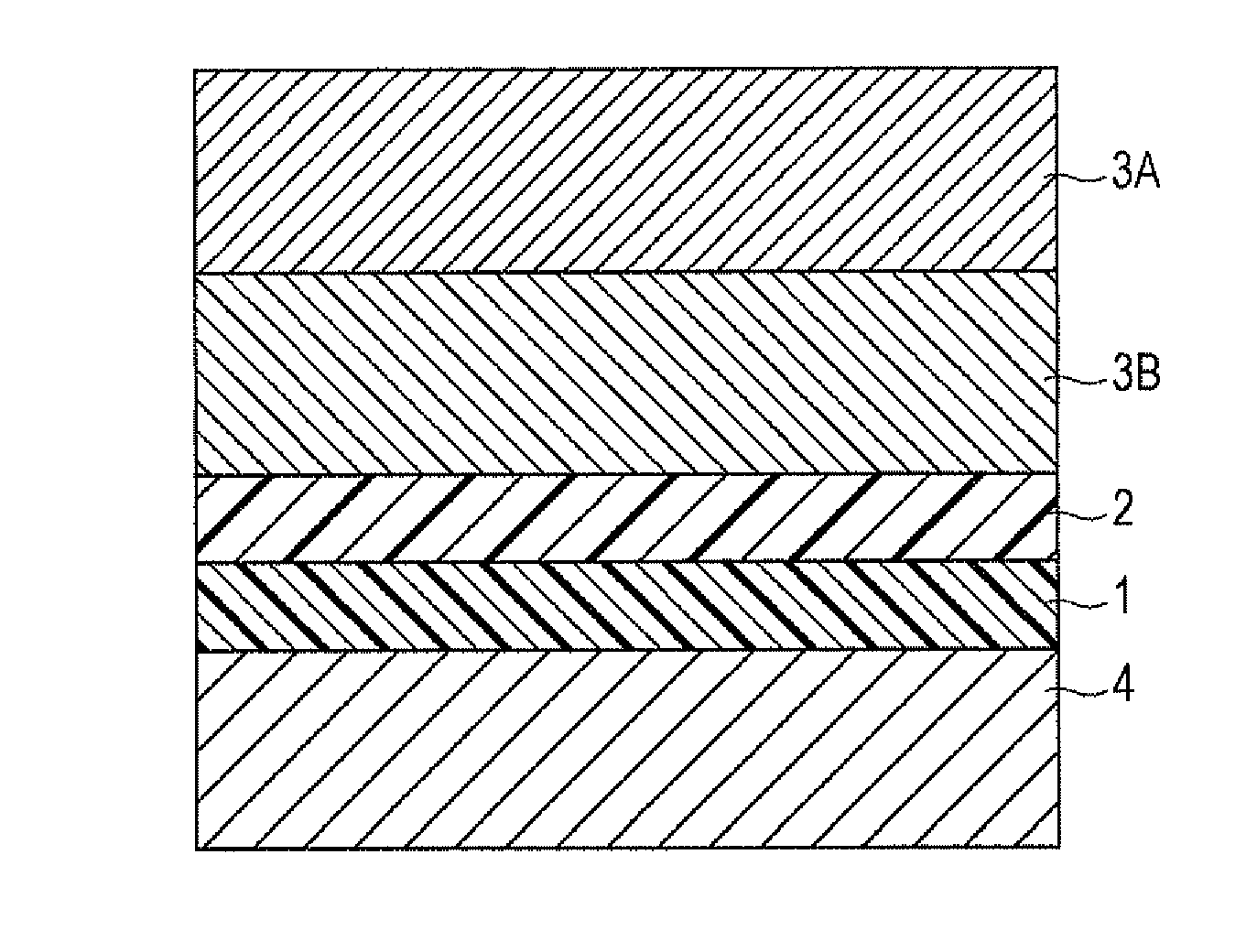Electrophotographic photoconductor, method for preparing the same, process cartridge, and image forming apparatus
a photoconductor and electrochromic technology, applied in the field of electrochromic photoconductor, a method for preparing the same, a process cartridge, and an image forming apparatus, can solve the problems of deterioration and wear of the photoconductor, and achieve the effect of improving the performance of the photoconductor
- Summary
- Abstract
- Description
- Claims
- Application Information
AI Technical Summary
Benefits of technology
Problems solved by technology
Method used
Image
Examples
synthetic example 1
Synthesis of Compound I-14
[0221]
[0222]Into a 1000 ml flask, 100 g of a compound (1), 107 g of methacrylic acid, 300 ml of toluene, and 2 g of p-toluene sulfonic acid are added and the mixture is refluxed under heating for 10 hours. Upon completion of reaction, the mixture is cooled and put into 2000 ml of water to be washed, and is further washed with water. The toluene layer is dried over anhydrous sodium sulfate and purified by silica gel column chromatography to obtain 35 g of a compound (I-14). The IR spectrum of the compound (I-14) is shown in FIG. 6.
synthetic example 2
Synthesis of Copolymer
[0223]
[0224]Into a 500 ml flask, 20 g of compound (I-14), 5 g of 2-(2-ethoxyethoxy)ethyl acrylate, 150 g of toluene, and 0.5 g of polymerization initiator (V601) are added. After the flask is purged with nitrogen, the mixture is refluxed for 3 hours at 90° C. under heating. The mixture is cooled to room temperature, and 25 ml of tetrahydrofuran is added to the mixture. The resulting solution is added to 1000 ml of methanol dropwise to obtain a solid component. Reprecipitation is conducted twice. As a result, 20 g of compound (2) is obtained.
example 1
Formation of Undercoat Layer
[0225]One hundred parts of zinc oxide (average particle size: 70 nm, product of Tayca Corporation, specific surface: 15 m2 / g) and 500 parts of toluene are mixed and stirred. To the resulting solution, 1.3 parts of a silane coupling agent KBM503, product of Shin-Etsu Chemical. Co., Ltd.) is added, and the mixture is stirred for 2 hours. Then toluene is removed by evaporation under a reduced pressure and baking is conducted at 120° C. for 3 hours to obtain zinc oxide surface-treated with the silane coupling agent.
[0226]The zinc oxide surface-treated with the silane coupling agent (110 parts) and 500 parts of tetrahydrofuran are mixed and stirred. To the resulting mixture, a solution of 0.6 parts of alizarin in 50 parts of tetrahydrofuran is added, and the mixture is stirred at 50° C. for 5 hours. The zinc oxide clad with alizarin is separated by filtering under a reduced pressure and dried under a reduced pressure at 60° C. to obtain alizarin-clad zinc oxid...
PUM
| Property | Measurement | Unit |
|---|---|---|
| temperature | aaaaa | aaaaa |
| mechanical strength | aaaaa | aaaaa |
| mechanical strength | aaaaa | aaaaa |
Abstract
Description
Claims
Application Information
 Login to View More
Login to View More - R&D
- Intellectual Property
- Life Sciences
- Materials
- Tech Scout
- Unparalleled Data Quality
- Higher Quality Content
- 60% Fewer Hallucinations
Browse by: Latest US Patents, China's latest patents, Technical Efficacy Thesaurus, Application Domain, Technology Topic, Popular Technical Reports.
© 2025 PatSnap. All rights reserved.Legal|Privacy policy|Modern Slavery Act Transparency Statement|Sitemap|About US| Contact US: help@patsnap.com



